|
|
: Monday, May 18th, 2015 |
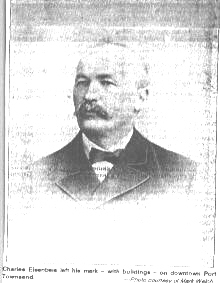
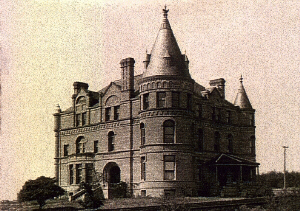

Charles Eisenbeis was born 10 July, 1832, in Spiesermühle,
Germany. (See drawing of the mill at Spiesermühle on
right, on left today the mill is a tea's loung.)
His father, Valentin, comes from the mill of his parents at
Wellesweiler. Having lost his wife one year after his marriage  Valentin
lives with Catherine Krohn and from this connection born three
illegitimate children, Henrietta, Frederick and Charles. Relatives
marry. The couple will have again six children including Ludwig a
Valentin
lives with Catherine Krohn and from this connection born three
illegitimate children, Henrietta, Frederick and Charles. Relatives
marry. The couple will have again six children including Ludwig a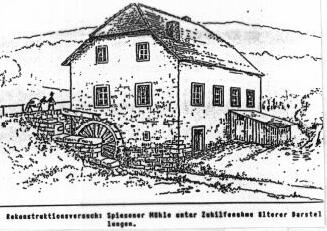 nd Sophie. In the
Eisenbeis family, much was spoken about the United States. Two
families had already left, one in 1821 with six children, the
other in 1822 with two children. At the age of 24, Charles and his
older brother of two years, Frederick, bent on adventure
decide to head for America. The trip will be long: join Nancy
where the train Strasbourg - Paris recently put in service will
take them to Paris, then Paris-Le Havre where it is necessary to
distrust thieves that target particularly foreigners who have
money, because they have to pay the crossing and the food.
nd Sophie. In the
Eisenbeis family, much was spoken about the United States. Two
families had already left, one in 1821 with six children, the
other in 1822 with two children. At the age of 24, Charles and his
older brother of two years, Frederick, bent on adventure
decide to head for America. The trip will be long: join Nancy
where the train Strasbourg - Paris recently put in service will
take them to Paris, then Paris-Le Havre where it is necessary to
distrust thieves that target particularly foreigners who have
money, because they have to pay the crossing and the food.
In 1856 he disembarks to Rochester, New York. His older brother
is always with him. From his family, Charles had learned the trade
of baker, and he rapidly prospered in this trade while in
Rochester. During the height of the Gold Rush, Charles, decides to
head west. Despite the apprehension of the trip, and the fact that
he is prone to seasickness, he decides to travel to the west coast
by the sea. The daughter of Frederick, Miss Lena, declares just
before her death that Charles traveled to San Francisco by sailing
around Cape Horn. The intended destination of the trip is
Steilacoom, today a very small city close to Tacoma to the south
west of Seattle. Steilacoom is to the bottom of the estuary Puget
Sound, very steep estuary. The trip is undertaken on a slow and
small sailboat, the Big Cyprus. In February 1858,
approaching the Puget Sound, a tempest rages and during six days
it is impossible to approach the coast. The seventh day the wind
falls, but then heavy fog settled in. The captain lands instead at
Port Townsend , small port to the entry of Puget Sound. Charles
Prosch, a passenger, describes this trip. On the top deck he
notices a man, Charles Eisenbeis, who is clearly sick, who asks to
the captain how much time will be necessary to arrive at
Steilacoom. The captain, stoic, replies: " I don't know but the
trip has never lasted more three weeks, I think perhaps two
weeks". Charles exclaims with a pronounced accent: "Oh mein
Gott! I goes overpoard! ". Thus Charles interrupts his trip
and disembarks to Port Townsend. 
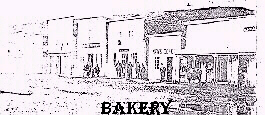
Without money, and with his brother Frederick, Charles begins by
doing odd jobs to survive. At that time, the closest supply for
bread was Portland, Oregon, so after a few short months of saving
money from his odd jobs, he opened The Pioneer Bakery"
selling crackers and ships' bread. The business quickly
prospered. The site of this shop is found in the site of the
magnificent building, 314-316 Water Street. Two later years he
finally makes it to Steilacoom, again with his brother. He exerts
the same trade successfully during five years. He returns alone to
Port Townsend. Port Townsend was growing rapidly during this
period. In 1859, there were only three hundred residents in the
city, by 1890 there will be seven thousand residents. He buys the
site of his first shop. He continues in the trade of making bread,
but expands to
include the sale of animal feed. He built on the site the
first building in stone. It is the beginning of
constructions realized by Charles, 1873 the building to the corner
of Tylers and Water Street that will be occ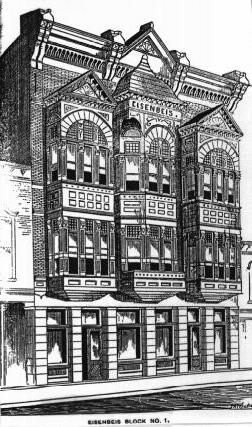 upied during 12 years by State's
customs, quays between Taylors and Van Burens Street that improves
the appearance of the city; 1884 a building between Quincy and
Water Street. 1890 the Mount Baker Block to the corner of
Water and Taylors Street
the greatest building of the city; several small residential and
commercial real estate. In 1889 he had constructed a manufacture
of bricks that fed in material all the city. He realizes the Union
Wharf that is an immense commercial quarter by the long of " wharf
Eisenbeis". He becomes the lead of the "Group of the Five", the
Big Five Syndicate, five persons that control all the economy of
the city: the entry ports along the wharfs, the railroad, the
first National Bank, several small commercial banks, the
steelworks. There is some confusion about the time he married. One
account states that he married Elisabeth Berghauser, a native of
Prussia, in San Francisco in 1856. Another belief is that he met
and married her in Port Townsend at a later date. Elisabeth died
in 1882, survived by Charles, two sons and two daughters; Charles
Jr, Frederick, Sophia, and Luise. Charles later marries Kate E.
Hughs (nee Marsh), a native of England. Charles and Kate have four
children, Lillian, Otto, Hilda, and Josephine. There is also some
question as to when Charles and Frederick's brother Ludwig and
sister Sophie joined them in Port Townsend either traveled with
them or have joined them later. One will find them on a list of
persons residing Port Townsend under the name of Louis and Sophie
Eisenbeis in 1870, and in 1875 in the San Francisco Call
Newspaper, there is a listing of the marriages of Louis Eisenbeis
to Catharine Bitterle, and "Sopia" Eisenbeisto August
Leemann. On February 12, 1878, Charles was elected as the
first mayor of the Port Townsend, serving three terms. He was also
twice the treasurer of the city and member of the Health
Commission . The article "a
upied during 12 years by State's
customs, quays between Taylors and Van Burens Street that improves
the appearance of the city; 1884 a building between Quincy and
Water Street. 1890 the Mount Baker Block to the corner of
Water and Taylors Street
the greatest building of the city; several small residential and
commercial real estate. In 1889 he had constructed a manufacture
of bricks that fed in material all the city. He realizes the Union
Wharf that is an immense commercial quarter by the long of " wharf
Eisenbeis". He becomes the lead of the "Group of the Five", the
Big Five Syndicate, five persons that control all the economy of
the city: the entry ports along the wharfs, the railroad, the
first National Bank, several small commercial banks, the
steelworks. There is some confusion about the time he married. One
account states that he married Elisabeth Berghauser, a native of
Prussia, in San Francisco in 1856. Another belief is that he met
and married her in Port Townsend at a later date. Elisabeth died
in 1882, survived by Charles, two sons and two daughters; Charles
Jr, Frederick, Sophia, and Luise. Charles later marries Kate E.
Hughs (nee Marsh), a native of England. Charles and Kate have four
children, Lillian, Otto, Hilda, and Josephine. There is also some
question as to when Charles and Frederick's brother Ludwig and
sister Sophie joined them in Port Townsend either traveled with
them or have joined them later. One will find them on a list of
persons residing Port Townsend under the name of Louis and Sophie
Eisenbeis in 1870, and in 1875 in the San Francisco Call
Newspaper, there is a listing of the marriages of Louis Eisenbeis
to Catharine Bitterle, and "Sopia" Eisenbeisto August
Leemann. On February 12, 1878, Charles was elected as the
first mayor of the Port Townsend, serving three terms. He was also
twice the treasurer of the city and member of the Health
Commission . The article "a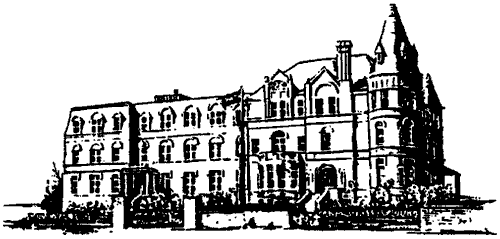 History of the state
of Washington" written by H.K. Hines published in 1893 ends
thus: here is summary the life of the most representative man of
Port Townsend that with his perseverance, his ambition, the senses
of business has conquered poverty, has made a real fortune and has
acquired a respectable worthiness. Others, however, have been far
less kind. During the depression of the 1890's, America took it's
first step to the socialist left. Leftist, denouncing all
businessman as greedy and labeling productive citizens as "Robber
Barons". This social mood continued to cause great problems for
businessmen, and many businesses in Port Townsend failed. With the
decline in business, the planned railroad line bypassed Port
Townsend contributing further to the decline business.
History of the state
of Washington" written by H.K. Hines published in 1893 ends
thus: here is summary the life of the most representative man of
Port Townsend that with his perseverance, his ambition, the senses
of business has conquered poverty, has made a real fortune and has
acquired a respectable worthiness. Others, however, have been far
less kind. During the depression of the 1890's, America took it's
first step to the socialist left. Leftist, denouncing all
businessman as greedy and labeling productive citizens as "Robber
Barons". This social mood continued to cause great problems for
businessmen, and many businesses in Port Townsend failed. With the
decline in business, the planned railroad line bypassed Port
Townsend contributing further to the decline business.  In anticipation of the railway, Charles built the
magnificent "Hotel Eisenbeis" with 120 bedrooms and 250 meter of
veranda overlooking the proposed railroad terminal. The hotel
never opened and was later suspiciously destroyed by fire. As a
major holder of property in Port Townsend, Charles was hit more
severely by the depression than other local businessmen. To
continue paying for the services demanded by the socialists
controlling the city at that time, property taxes were imposed and
continued to increase. Charles' tax assessment for 1890 was
reported to be $8
In anticipation of the railway, Charles built the
magnificent "Hotel Eisenbeis" with 120 bedrooms and 250 meter of
veranda overlooking the proposed railroad terminal. The hotel
never opened and was later suspiciously destroyed by fire. As a
major holder of property in Port Townsend, Charles was hit more
severely by the depression than other local businessmen. To
continue paying for the services demanded by the socialists
controlling the city at that time, property taxes were imposed and
continued to increase. Charles' tax assessment for 1890 was
reported to be $8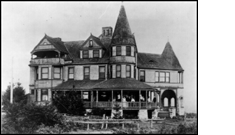 2,525.00.
But Charles remained optimistic and refused to abandon his town.
Even with much of the business ventures failing, Charles and his
friend Joe Kuhn donated property and building materials for
construction of Hospital in 1890, and in 1892, Charles used the
last brick produced by his brickyard to construct a magnificent
main home of three floors in brick and stone, with a roof in slate
and with the best comfort of that period in which he will live
with his family to finally rest after a well active 35 years long
life of a pioneer. Charles died 9 March 1902, survived by eight
children and his second wife. The day of funeral, the family
received a telegram announcing the death of Charles' brother,
Frederick, who had remained in Steilacoom. "The newspaper,
"Morning Leader" stated in
2,525.00.
But Charles remained optimistic and refused to abandon his town.
Even with much of the business ventures failing, Charles and his
friend Joe Kuhn donated property and building materials for
construction of Hospital in 1890, and in 1892, Charles used the
last brick produced by his brickyard to construct a magnificent
main home of three floors in brick and stone, with a roof in slate
and with the best comfort of that period in which he will live
with his family to finally rest after a well active 35 years long
life of a pioneer. Charles died 9 March 1902, survived by eight
children and his second wife. The day of funeral, the family
received a telegram announcing the death of Charles' brother,
Frederick, who had remained in Steilacoom. "The newspaper,
"Morning Leader" stated in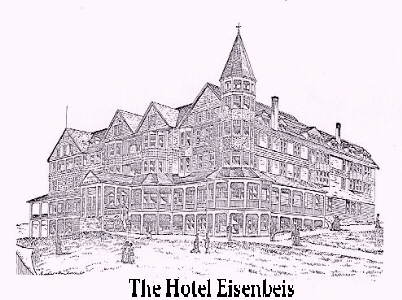 a column in its 13 March 1902 issue
that there was a special town council meeting was called to
eulogize Charles Eisenbeis".
a column in its 13 March 1902 issue
that there was a special town council meeting was called to
eulogize Charles Eisenbeis".
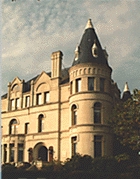
In 1905, Kate Eisenbeis remarried and the castle was left empty
for almost 20 years except for a caretaker. In 1925, a Seattle
attorney bought the Castle as a vacation place for nuns teaching
in Seattle schools. This plan did not work out well and in l927
the Jesuit priests purchased the building for use as a training
college The priests spent their sixteenth and final year of
training here studying ascetic theology. In 1920, the Jesuits
added a large wing housing a chapel and sleeping rooms. They also
installed the elevator (an Otis) at, a cost of $3,400 -- a
substantial sum in those days. When their addition was complete,
the Jesuits stuccoed over the bricks of the original portion to
give the building a more uniform look. They named the complex
"Manresa Hall" after the town in Spain where Ignatius Loyola
founded the order. The Jesuits left in l968 and the building was
converted into a hotel, known as Manresa
Castle, (A haunted Castle ) . The
three different owners since l968 have all done their part to
lovingly renovate the building to modern standards while
maintaining its Victorian elegance. For example, there were only 3
bathrooms when the Jesuits left, today there are 43.
Sources of information for the above: Henri & Dennis, and others have references about
Charles. If you want, you cna contact them.
1)Eisenbeis, Henri "third part of an article wrote September
19,1996 to be publishing in the"Saarheimat" a magazine of
Neunkirchen area, ancestor's region of Charles Eisenbeis"
2)Topolnicki, Denise M. "Living Like a Robber Baron", Money
Magazine, vacations section, pp 100-101 March 1985.
3)Unnamed source, "Port Townsend: Years That Are Gone".
4)Personal letter from Ray and Tiny (Eisenbeis?), "Profile or
Charles Eisenbeis Sr." (but this makes a reference to the "'Port
Townsend Leader', date unknown" as it's source of information.
5)Unnamed source, "Charle Eisenbeis House, -1892"
6)Unnamed source, "Assuming Metropolitan Airs"
7)Camfield, Tom "Port Townsend's History", http://www.olympus.net/placesOfInterest/portTownsend/history.html
waybackmachine
8)Camfield, Tom "Monumental Excess In 'The Good Old Days'",
http://www.olympus.net/placesOfInterest/portTownsend/hotel.html
waybackmachine
9)Manresa Castle, http://www.olympus.net/biz/manresa/
waybackmachine
10)Marriage listings for 1875, "San Francisco Call" Newpaper
11)Hines, Rev. H.K. "An Illustrated History of the State of
Washington", D.D. Chicago: The Lewis Publinshing Company(pp
533-34)
12)The deliberation (E-27) of the Town council of Port
Townsend,10 March 1902 about the dead of Charles
13)Hermanson, James, Lead Contributing Writer on news paper "The
Port Townsend Jefferson County LEADER",the article "EISENBEIS
WAS BUSIEST OF THE BIG FIVE" February 24 1993
14)Port Townsend Call, newspaper, October 4,1887 article
"Satisfaction guaranteed in the BREWERY of Charles Eisenbeis
!!!"
15)Prosch, Charles, "Reminiscences of Washington Territory",
Seattle 1904 pp 7,8&9 The image of the Hotel Eisenbeis said
the drawing came "From Port Townsend Illustrated"
 |
 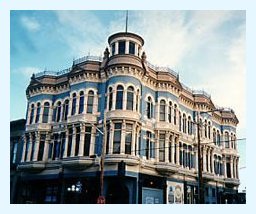 |
 |
Liens
Ghost stories from the Pacific Northwest Par
Margaret Read MacDonald
| Legends about
Manresa Castle include two ghosts who have taken up
residence. One is that of a priest who hung himself in the
left tower after committing a cardinal sin and then making
his peace with God. The second is the ghost of a young
woman who leaped to her death from a third storey window
after her lover failed to meet her. While odd things have
occurred, such as doors opening or closing, or lights
turning on and off, the stories of these two ghosts are
false, made up to amuse tourists by a bartender who once
worked at the castle. |
|
| Restoration of the
Eisenbeis Castle The owners of the hotel have returned it to its former Victorian glory, the final renovations being completed in March 2005. The 43 bathrooms that exist today owe their thanks to the making of the movie, “An Officer and a Gentleman.”(A young man must complete his work at a Navy Flight school to become an aviator, with the help of a tough gunnery sergeant and his new girlfriend.) The crews’ contracts specified that each person would have a room with its own bathroom, and when they ran out of rooms at other hotels, the studio cut a deal with Manresa Castle and arranged for them to be built. Paramount Pictures begins filming An Officer and a Gentleman in Port Townsend in April 1981 Originally, Manresa had only one bathroom per floor... Recherce http://search.nwsource.com/search?from=ST&searchtype=network&query=manresa+hotel&x=0&y=0 Photographs from Manresa Castle Photographs from Manresa Castle The Exterior: The Lobby, Charles Eisenbeis, The Floorplan, The History, The Hallways, Our Room, The View from our room Other Rooms Suites (Haunted?), 302, 304, The Restaurant, The Grounds, The Old Chapel, and Breakfas Room. The journal Entries (pictures taken of actual journals that used to be in some of the "haunted rooms") |
 |
|
| The Port Townsend Historic
Building source |
|
| Founded
in 1851, Port Townsend is known for its remarkable
collection of Victorian buildings, lively arts scene and
scenic beauty. Port Townsend is a National Historic Landmark
District recognized for its historic significance, one of
only 2,500 such districts in the United States. A year-round
calendar of events, independently-owned shops and inviting
lodgings make Port Townsend a memorable destination. This
guide was developed by the Port Townsend Main Street
Program, a nonprofit organization committed to the
preservation and economic vitality of the historic business
districts, while maintaining our small town quality of life. |
|
| 1792 Captain George
Vancouver sailed HMS Discovery into Port Townsend’s harbor
and christened the area Port Townshend 1851 Townsite founded 1854 Named Puget Sound Customs Division, leads to bustling seaport economy up to 1880s 1860 Port Townsend incorporated as a city 1872 Fire Department founded 1889 Ground-breaking for railroad line that ultimately failed 1902 Fort Worden established 1910 Population 3,300 ... |
|
910-914 Water Street Corner
of Water and Taylor Streets  Owner Charles Eisenbeis, born in Prussia in 1832, arrived in Port Townsend in 1858. He died here in 1902. A man with multiple interests, he became the first Mayor of the town. Eisenbeis decided to construct a four-story business block with eight stores on the ground level and sixty-nine offices above, complete with elevator, at a cost of $80,000. Only the Kuhn Block was to cost more. The architects were Whiteway & Schroeder. The imposing building was nearly complete when the town’s economy began to collapse in the late 1880s. The much-heralded railroad line failed to come to town so Eisenbeis suspended interior work on the building. The top two floors were never more than framed. There are multiple rooms underground which connect with three tunnels. One runs along the front of the building on Water Street and two more connect with the first and run across Water Street toward the harbor. There has been much speculation as to the use of these tunnels. The underground space has housed an antique mall and is now available for rent. In the early 1970’s, the building was purchased by local real estate developer Sam Kyle who is the present owner. In 1998, Mr. Kyle completed the renovation of the third floor. An elevator was installed and finally, the fourth floor was finished into Class A office space, wired for high tech. The Mount Baker Block is now home to artists, entrepreneurs, nonprofits and thriving retail shops. Frank Ross Photo |
|
Eisenbeis Building 1889-2007 Common Name:
Olympic Hardware 1003-1009 Water Street  In 1873, the Charles Eisenbeis building was constructed as the city’s first stone building–a one story 20x70 single story structure. Businesses included gents’ clothes, dry goods, and groceries. In 1889, two brick stories were added to the building. The architects were Schroeder & Whiteway. In 1903, it became the New Eisenbeis Hotel. Restaurants, saloons, theater and a “movie picture house” were located there throughout the years. Olympic Hardware was established in 1916. In 1956, there was a major “facelift” to the building, taking down the old bay windows. In 1977, the Amels purchased the building and store. They operated it until 2003, when Albert Amel passed away. Present owners Ritch Sorgen and Marlies Egberding are now renovating the building to restore the bay windows and three storefronts. The upper floors have been converted into condominiums. Eisenbeis Building animation page  |
|
The Rose Theatre 1907 Historic
Name: Haller Theater Building 235 Taylor Street  A theater called “The Haller Theater” was built on a lot owned by the Eisenbeis Estate Company in 1907. The next year, the Rose Theater moved to the site and "The Haller" disappeared. The theater was managed by a stream of different owners until 1959 when it closed and became a bakery, sporting goods store, a “bargain house” making keys, repairing shoes and selling sewing machines. Building owner Phillip Johnson and theatre owner Rocky Friedman rehabilitated The Rose to bring back much of its original atmosphere and reopened its doors in 1992. |
|
Eisenbeis Stone Block 1884
Common Name: Earthenworks Building 702 Water Street  The cellar for this building was dug in 1882 but it wasn’t finished until 1884. Built by Charles Eisenbeis, it was the first sandstone building in town, the stone floated in from Scow Bay. The first commercial business was Louis Wolff’s Saloon. It subsequently housed The Milwaukee (bus) Depot and a laundry. By 1920, it was a second hand store; then saw life as a plumbing store for forty years, Puget Sound Power and Light, and finally in 1984 —Earthenworks Gallery. The building is owned by the gallery owners Don and Cynthia Hoskins. |
|
U.S. Customs House 1878 Common
Name: Lighthouse Café  Historic Name: Eisenbeis Wood Building 955 Water Street By the last half of 1878 Charles Eisenbeis had completed the two-story wood structure. In December 1878, the U.S. Customs House was moved to this location. The upstairs portion of the building was being used as a boarding house. In 1890, the Commercial Hotel replaced the U.S. Customs House and boarding house accommodations. The Axtell Saloon was operating on Water Street frontage as well. Later businesses included a tailor/tobacco shop, restaurant and a shoe/harness repair shop. The Lighthouse Café has been operating at this location since 1968. The building is owned by James and Karen Manier. |
|
 |
Charles Eisenbeis was born 10 July, 1832, in Spiesermühle, Germany. (See drawing of the mill at Spiesermühle on right.) His father, Valentin, comes from the mill of his parents at Wellesweiler. Having lost his wife one year after his marriage Valentin lives with Catherine Krohn and from this connection born three illegitimate children, Henrietta, Frederick and Charles. Relatives marry. The couple will have again six children including Ludwig and Sophie. In the Eisenbeis family, much was spoken about the United States. Two families had already left, one in 1821 with six children, the other in 1822 with two children. At the age of 24, Charles and his older brother of two years, Frederick, bent on adventure decide to head for America. The trip will be long: join Nancy where the train Strasbourg - Paris recently put in service will take them to Paris, then Paris-Le Havre where it is necessary to distrust thieves that target particularly foreigners who have money, because they have to pay the crossing and the food.
In 1856 he disembarks to Rochester, New York. His older brother is always with him. From his family, Charles had learned the trade of baker, and he rapidly prospered in this trade while in Rochester. During the height of the Gold Rush, Charles, decides to head west. Despite the apprehension of the trip, and the fact that he is prone to seasickness, he decides to travel to the west coast by the sea. The daughter of Frederick, Miss Lena, declares just before her death that Charles traveled to San Francisco by sailing around Cape Horn. The intended destination of the trip is Steilacoom, today a very small city close to Tacoma to the south west of Seattle. Steilacoom is to the bottom of the estuary Puget Sound, very steep estuary. The trip is undertaken on a slow and small sailboat, the Big Cyprus. In February 1858, approaching the Puget Sound, a tempest rages and during six days it is impossible to approach the coast. The seventh day the wind falls, but then heavy fog settled in. The captain lands instead at Port Townsend , small port to the entry of Puget Sound. Charles Prosch, a passenger, describes this trip. On the top deck he notices a man, Charles Eisenbeis, who is clearly sick, who asks to the captain how much time will be necessary to arrive at Steilacoom. The captain, stoic, replies: " I don't know but the trip has never lasted more three weeks, I think perhaps two weeks". Charles exclaims with a pronounced accent: "Oh mein Gott! I goes overpoard! ". Thus Charles interrupts his trip and disembarks to Port Townsend.
Without money, and with his brother Frederick, Charles begins by doing odd jobs to survive. At that time, the closest supply for bread was Portland, Oregon, so after a few short months of saving money from his odd jobs, he opened The Pioneer Bakery" selling crackers and ships' bread. The business quickly prospered. The site of this shop is found in the site of the magnificent building, 314-316 Water Street. Two later years he finally makes it to Steilacoom, again with his brother. He exerts the same trade successfully during five years. He returns alone to Port Townsend. Port Townsend was growing rapidly during this period. In 1859, there were only three hundred residents in the city, by 1890 there will be seven thousand residents. He buys the site of his first shop. He continues in the trade of making bread, but expands to include the sale of animal feed. He built on the site the first building in stone. It is the beginning of constructions realized by Charles, 1873 the building to the corner of Tylers and Water Street that will be occupied during 12 years by State's customs, quays between Taylors and Van Burens Street that improves the appearance of the city; 1884 a building between Quincy and Water Street. 1890 the Mount Baker Block to the corner of Water and Taylors Street the greatest building of the city; several small residential and commercial real estate. In 1889 he had constructed a manufacture of bricks that fed in material all the city. He realizes the Union Wharf that is an immense commercial quarter by the long of " wharf Eisenbeis". He becomes the lead of the "Group of the Five", the Big Five Syndicate, five persons that control all the economy of the city: the entry ports along the wharfs, the railroad, the first National Bank, several small commercial banks, the steelworks. There is some confusion about the time he married. One account states that he married Elisabeth Berghauser, a native of Prussia, in San Francisco in 1856. Another belief is that he met and married her in Port Townsend at a later date. Elisabeth died in 1882, survived by Charles, two sons and two daughters; Charles Jr, Frederick, Sophia, and Luise. Charles later marries Kate E. Hughs (nee Marsh), a native of England. Charles and Kate have four children, Lillian, Otto, Hilda, and Josephine. There is also some question as to when Charles and Frederick's brother Ludwig and sister Sophie joined them in Port Townsend either traveled with them or have joined them later. One will find them on a list of persons residing Port Townsend under the name of Louis and Sophie Eisenbeis in 1870, and in 1875 in the San Francisco Call Newspaper, there is a listing of the marriages of Louis Eisenbeis to Catharine Bitterle, and "Sopia" Eisenbeisto August Leemann. On February 12, 1878, Charles was elected as the first mayor of the Port Townsend, serving three terms. He was also twice the treasurer of the city and member of the Health Commission . The article "a History of the state of Washington" written by H.K. Hines published in 1893 ends thus: here is summary the life of the most representative man of Port Townsend that with his perseverance, his ambition, the senses of business has conquered poverty, has made a real fortune and has acquired a respectable worthiness. Others, however, have been far less kind. During the depression of the 1890's, America took it's first step to the socialist left. Leftist, denouncing all businessman as greedy and labeling productive citizens as "Robber Barons". This social mood continued to cause great problems for businessmen, and many businesses in Port Townsend failed. With the decline in business, the planned railroad line bypassed Port Townsend contributing further to the decline business. In anticipation of the railway, Charles built the magnificent "Hotel Eisenbeis" with 120 bedrooms and 250 meter of veranda overlooking the proposed railroad terminal. The hotel never opened and was later suspiciously destroyed by fire. As a major holder of property in Port Townsend, Charles was hit more severely by the depression than other local businessmen. To continue paying for the services demanded by the socialists controlling the city at that time, property taxes were imposed and continued to increase. Charles' tax assessment for 1890 was reported to be $82,525.00. But Charles remained optimistic and refused to abandon his town. Even with much of the business ventures failing, Charles and his friend Joe Kuhn donated property and building materials for construction of Hospital in 1890, and in 1892, Charles used the last brick produced by his brickyard to construct a magnificent main home of three floors in brick and stone, with a roof in slate and with the best comfort of that period in which he will live with his family to finally rest after a well active 35 years long life of a pioneer. Charles died 9 March 1902, survived by eight children and his second wife. The day of funeral, the family received a telegram announcing the death of Charles' brother, Frederick, who had remained in Steilacoom. The newspaper " Morning Leader " of 13 March 1902 brings in its deliberation columns of the municipal advice united in extraordinary session to this opportunity making the eulogy of Charles Eisenbeis.
In 1905, Kate Eisenbeis remarried and the castle was left empty
for almost 20 years except for a caretaker. In 1925, a Seattle
attorney bought the Castle as a vacation place for nuns teaching
in Seattle schools. This plan did not work out well and in l927
the Jesuit priests purchased the building for use as a training
college The priests spent their sixteenth and final year of
training here studying ascetic theology. In 1920, the Jesuits
added a large wing housing a chapel and sleeping rooms. They also
installed the elevator (an Otis) at, a cost of $3,400 -- a
substantial sum in those days. When their addition was complete,
the Jesuits stuccoed over the bricks of the original portion to
give the building a more uniform look. They named the complex
"Manresa Hall" after the town in Spain where Ignatius Loyola
founded the order. The Jesuits left in l968 and the building was
converted into a hotel, known as"Manresa Castle",. The
three different owners since l968 have all done their part to
lovingly renovate the building to modern standards while
maintaining its Victorian elegance. For example, there were only 3
bathrooms when the Jesuits left, today there are 43.
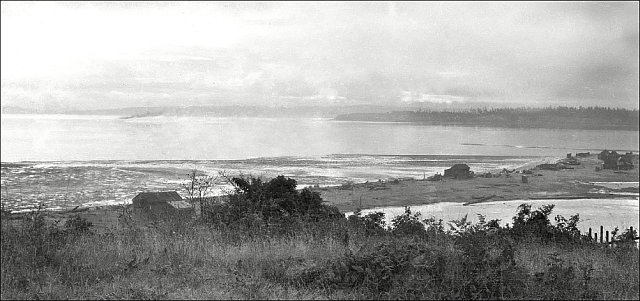 |
|
This
George Welch photo of Lincoln Beach was taken in 1921.
It shows the beach next to Port Townsend that is another
likely landing point for Jarman in 1848, opposite
southern Whidbey Island and the present ferry channel.
The photo was lovingly reproduced by Ann Welch, whose
website offers a CD of such historic photos called "Port Townsend: Then
and Now". George Welch was her grandfather; he
married Lillian Eisenbeis, daughter of Port Townsend
retailer and capitalist Charles Eisenbeis, who erected
his stone building downtown and the famous Manresa
Castle. Ann grew up in the town, but left for many years
to live in Seattle, where she operated a hot glass
studio. She moved back to Port Townsend five years ago
and rediscovered George's prints and 3x5-inch negatives,
which were shot between 1903 and 1925. After many hours
of restoration and reproduction, Ann produced her CD and
the website, which has a marvelous comparison section,
morphing the old photos into present scenes on the same
spot. Her brother is Mark Welch, the mayor of Port
Townsend, who is also a photographer and teaches video
production at Port Townsend High School. |
|
|||||||||||||||||||||||||||||||||||||||||||||||||||||||||||||||||||||||||||||||
![]()